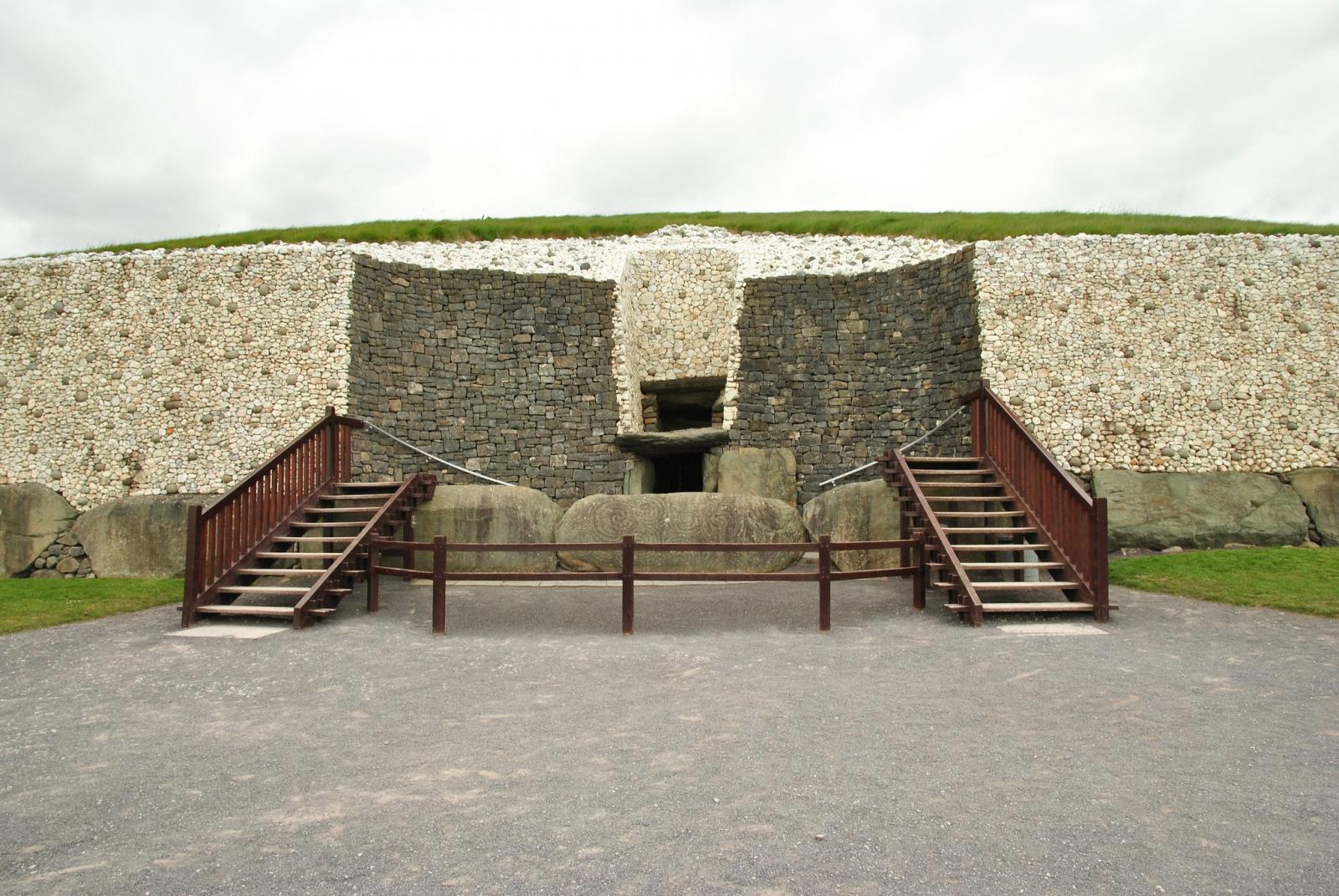By Bishop John Sherrington
O Oriens,
splendor lucis aeternae, et sol justitiae:
veni, et illumina sedentes in tenebris, et umbra mortis.
O Day-Spring, Brightness of light eternal, and Sun of Justice, come and enlighten them that sit in darkness and in the shadow of death. (Roman Missal, 1962)
On the shortest day of the year, at day-spring, the weak winter sunlight from the Eastern sky passes over the great entrance stone of threshold and penetrates along the narrow passage into the Neolithic Burial Chamber at Newgrange in the Boyne Valley. For a few fleeting minutes the inner spherical burial chamber is illuminated and then passes again into darkness. The event will occur again in another year as it has for the last 5000. For the agricultural people, whose experts and builders created these mysterious stone burial chambers, this symbol must have given them hope and pointed to something beyond themselves. They knew that the warmth and light of spring would follow the darkness and death of winter. The location of the grave and the importance given to burial may have suggested a vague conception of the afterlife. The winter morning sunlight of Newgrange can be read as a seed of hope towards the radiance of the coming of Christ in God’s miraculous and eternal plan.
Today as we pass through this bleak winter of leaden skies and a shortage of light, the music and the readings of Advent shine into our lives reminding us of the love of God for each one of us. We keenly and earnestly look forward to the birth of Christ who is the Brightness of light eternal, and whose kingdom of justice, peace and love shines out into a world of many shadows bringing hope and the promise of new life.
COVID-19 has brought many people close to the shadow of death and cast a long shadow over relationships and activities. Many people have spent the year in the twilight zone, whether in care homes, alone and isolated apart from FaceTime calls and waves through windows, or because of the fear of a lack of work and income. Self-isolation, shielding, keeping distance and lockdown have become the vocabulary and actions of each day as we have striven to keep the virus at bay. We approach the Feast when we will celebrate that the Word became flesh and dwelt amongst us and continues to do so. A Saviour has been born to bring God’s holy people into the communion of saints. Time and distance will pass, as will shadows and light; love alone will endure as The Holy One, the Living God, is praised and adored.
Christmas speaks of the holiness of the flesh, of touch, of warmth, of relationship, closeness and communion. We pray that as the shadows fade and we progress into the New Year, we may do so safely and carry with us the insights we have learnt during the last nine months, the symbol of a time of giving birth to new life. Selfishness broke down and generosity thrived when neighbours opened doors and began to speak (at a distance) to one another. We have appreciated more deeply the everyday work of those who support us in essential services. We have relied upon others to help us live well. Gestures of friendship and outreach to the needy have transformed lives. We have recognised that we need one another and that the isolated self needs the love of relationships. The desire to love is woven into our being and the baby of Bethlehem shows us how to love through his birth, self-giving love for others, death and resurrection. May we continue to die to self and reach out to others as we celebrate this Feast and once more rejoice that the Morning Star of Christ has broken into the darkness and the shadow of death.
Image credit: John5199. Image shows Newgrange Stone Age Passage Tomb in Boyne Valley, Ireland. This file is licensed under the Creative Commons Attribution 2.0 Generic license.
